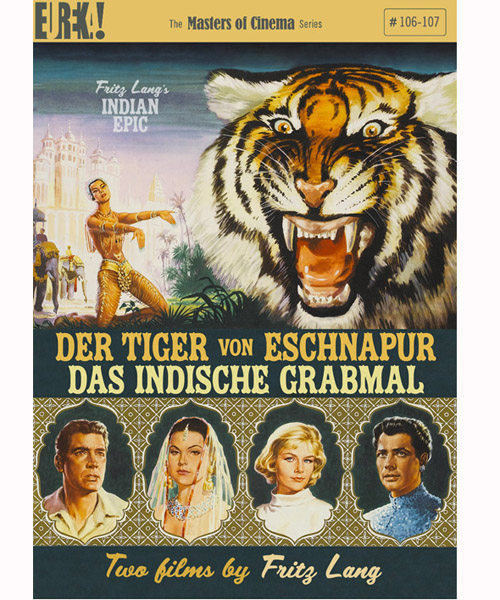Pete's Peek | Fritz Lang's Indian Epic is a ravishingly kitsch 1950s adventure

Best known for his 1930 German Expressionist masterpieces M, Metropolis and Dr Mabuse and his forays into Hollywood film noir in the 1950s, Fritz Lang was all set to call it a day back in 1959 when he got the chance to remake a film he and his former wife Thea von Harbou had worked on back in the 1920s.

The director’s Indian Epic, as it is now known, comprises two films – Der Tiger von Eschnapur (The Tiger of Eschnapur) and Das Indische Grabmal (The Indian Tomb) – that tell the tale of tyrant who turns his fairy-tale palace into a prison for the woman who refuses his affections.
In the first film, Chandra (Walter Reyer), the Maharaja of Eschnapur, falls for Seetha (The Haunted Palace's Debra Paget) a young temple dancer who only has eyes for a visiting German architect called Harald (Paul Hubschmid). The couple attempt to flee the city, but are captured: for Seetha, the palace becomes a gilded cage, while Harald is imprisoned in a secret dungeon. In the second film, Harald’s sister Irene (Sabine Bethmann) and her husband Walter (Claus Holm) arrive at the palace in search of the missing Harald. Walter is then coerced into building a grand tomb – not for the Maharaja, but for Seetha, who has been sentenced to die after she is married to Chandra. With no time to loose Irene and Seetha plot to free Harald, but first they must find their way through the palace’s maze of tunnels, caves, secret temples and dungeons filled with lepers, while trying to evade Chandra and his palace courtiers.

Wanting to prove to the Hollywood fraternity that a large-scale movie, shot in Europe on the cheap, could return a healthy profit, Lang put his retirement on hold to film his grand exotic adventure. The result is a lush, over-the-top fantasy that recalls old-fashioned Saturday morning serials and Arabian nights adventures like Bagdad and Son of Sinbad.
Kitsch in design, yet totally serious in tone, Indian Epic is a huge departure from the man who wowed us with his mad, futuristic visions in Metropolis and thrilled us with perfectly executed film noirs like The Big Heat. Lang’s double-bill certainly doesn’t attempt to reflect a realistic India, but the films do offer a ravishingly beautiful homage to the exotic East, as seen through Western eyes of the day.
Standing in for Chandra’s palace are the real-life island palaces and gardens of Udaipur in Rajasthan, and it is these shots which give the film its depth – in much the same way that films like Aguirre, the Wrath of God would achieve over a decade later.

Call it a guilty pleasure, but watching Paget dance (in Indian Tomb she gets down to a very revealing diamond encrusted G-string) while taking in these vibrantly colourful locations is all I needed to be sucked, body and soul, into Lang’s twisted tale about mad love.
The latest updates, reviews and unmissable series to watch and more!
The Masters of Cinema 2-disc DVD features newly-restored transfers of the films; a choice of German and English soundtracks; a making of documentary; vintage 8mm location footage; trailers; and a very informative booklet about Lang and his vision.
Released 18 April http://youtube.com/v/EkVzQ1dJ7I8

